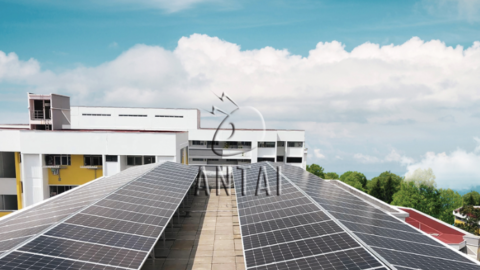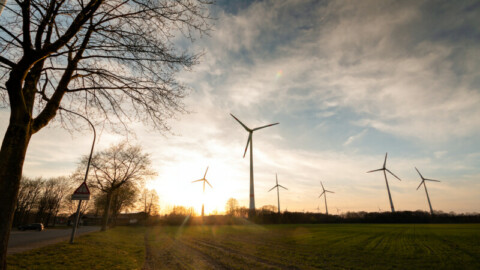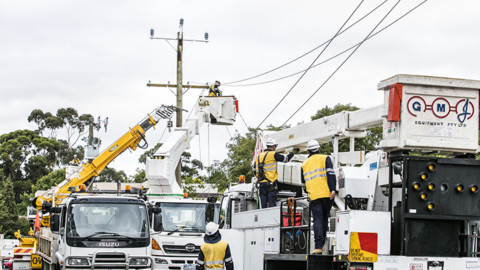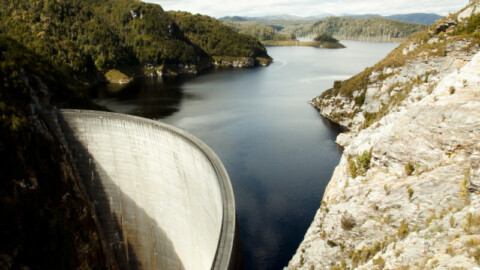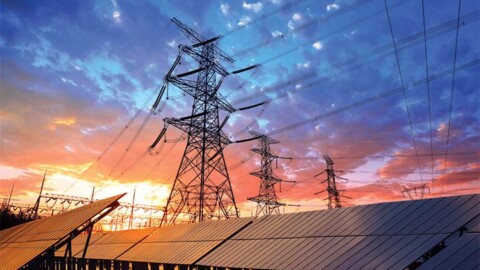Michael Forder is the expert grid connection and technical services manager at Risen Energy Australia. Before joining Risen Mr Forder handled numerous grid connection projects for ElectraNet (the Transmission Network Service Provider in South Australia) and managed grid connection teams and connection work for AGL’s Barker Inlet Power Station, Nexif Energy’s Snapper Point Power Station and numerous other major capital projects. He holds a mechanical engineering degree and a diploma in project management. In this insightful Q&A, we ask Michael some of the biggest questions around grid connection, highlighting the importance of having expertise in this area when developing large scale solar.
Q: Why is grid connection often referred to as a ‘bottleneck’ for the solar industry? What challenges do developers face when connecting new solar projects to the grid?
A: Grid connection covers many tasks and aspects. Hence why it is often seen as a ‘bottle-neck’ to simply making money from exporting electricity to the grid. A simplified definition of grid connection is the work required to design, build and connect a generation facility and for it to be connected to the grid ready for use (i.e. electricity generation). Using this simplified definition, the grid connection work can be split into “pre” and “post” connection agreement execution.
Furthermore, there are many “pre and post” connection agreement challenges developers face when progressing solar (and other projects).
Q: Can you explain the significance of this connection agreement in solar projects and its role in enabling revenue generation?
A: The connection agreement is one of the most important contracts to be executed or ‘signed-off’ before a facility can be connected to the grid and turned on to generate electricit. Specifically, once the connection agreement is executed – between the project developer/owner (such as Risen Energy) and the Network Service provider or NSP (aka, the grid operator) is completed, then electricity can be generated to the grid and the project owner can receive money from the electricity generated.
Q: You mentioned that there were challenges pre and post connection agreement. What are the primary challenges faced when progressing solar projects before executing the connection agreement?
A: Before executing the connection agreement, developers must tackle issues such as:
- Finding suitable land of sufficient size and quality
- Identifying cost-effective grid connection options
- Obtaining Development Application (DA) approval
- Addressing cultural heritage, vegetation, and fauna considerations
- Securing project funding and Power Purchase Agreements (PPAs)
- Developing the connection application, including creating Generator Performance Standards (GPS)
Q: Why does the development of Generator Performance Standards (GPS) often contribute to delays in grid connection?
A: Developing GPS involves creating theoretical models of the generator’s performance, which can be complex and time-consuming. Simulation tests and addressing performance issues can take months or years. Additionally, obtaining the AEMO 5.3.4a letter, a prerequisite for executing the connection agreement, adds to the time and complexity of the process.
Q: What are the challenges faced after executing the connection agreement, as you put it ‘Post Connection Agreement’, for a solar project?
A: After executing the connection agreement, developers face challenges including:
- Tendering project work for detailed design, procurement, construction, and commissioning
- Registering the generation facility with AEMO and completing R2 commissioning
- Designing the facility which considers selection of appropriate plant and equipment and their configurations based on site specific parameters like geotechnical studies, survey, and flood studies for civil footings, site water management as well as project specific requirements as outlined in the GPS and Connection Application and finally, integration and connection requirements of the facility to the grid
- Overcoming procurement challenges, including lead times and potential shipping issues
- Dealing with construction complexities, including native vegetation and cultural heritage considerations
- Conducting commissioning to ensure compliance with design and GPS
- Undertaking R2 commissioning for final performance validation
Q: Can you provide insight into the resources and time required for grid connection compared to other stages of large-scale solar project development?
A: Finding land and obtaining DA approval can take over a year. Developing a GPS, a critical component, requires around two to three years of effort to receive the AEMO 5.3.4a letter. The transmission connection agreement can take six months once the AEMO letter is received before it can be executed. Design, procurement and construction of the facility and the connection works can take around two years. Hence, large scale projects can typically be completed within four to six years (beginning to end).
Q: What changes are necessary in Australia’s grid to effectively connect solar farms?
A: An increase in the number of transmission lines and substations for the connection as well as interconnectors between states to ensure electricity generated can move seamlessly and unconstrained across the National Electricity Market. As solar farms are based on inverter-based technology, they lack essential reactive power (or inertia) which requires additional plant (like batteries with grid forming inverters, or synchronous condensers or other technologies) to be added to maintain system integrity.
Q: What technological advancements do you think will shape the future of grid connection?
A: As ‘traditional’ fossil fuelled synchronous generators are removed from the market (due to being retired or mothballed) and replaced with other forms of generation technology (rooftop solar, large scale solar, Battery Energy Storage Systems (BESS), hydro-electric etc), the complexities of renewables not being as reliable or as ‘on demand’ as their retired fossil fuelled counterparts, will require innovative solutions to ensure that supply meets demand on cold or hot days as well as at day or at night times 24/7. Just as the National Electricity Rules (NERs) have become more complicated to accommodate the inclusion of non-synchronous inverter-based generators, other generator and system security technologies will emerge to offset existing synchronous generator types that will likely demand additional network hardware solutions to ensure network integrity.
Q: What challenges do you anticipate as the solar industry continues to evolve and expand?
A: The solar industry’s growth may lead to increased demand for new connections to the grid, necessitating further upgrades and expansions. Additionally, ensuring grid stability and reliable energy supply with intermittent renewable sources will remain a prominent challenge.
Q: Is Australia’s electricity grid ready for a net zero emissions transition by 2050?
A: According to the reports that I have seen and conferences that I have attended, the pace at which the required grid augmentation and renewable energy generators being developed and connected is not meeting the required targets. Some reports outline that for every gigawatt of fossil fuelled generator being removed, the equivalent of seven to eight times more generation capacity is required by using renewable generators on the basis that the renewable generators are not ‘on demand’ as it isn’t always sunny and windy and BESSs need to be charged once they are depleted.
If you look at ‘Pocket NEM’ – which is a phone app which shows the current generation across the NEM – generally at any time of the day (and more so in winter, during the night), fossil fuelled generators (primarily coal) equate to about 60 per cent of the total NEM’s generation. So, for the last 20 years, we have only transitioned 40 per cent away from fossil fuelled generators.
So, consider it challenging but not mission impossible!
This sponsored editorial is brought to you by Risen Energy. For more information, visit risenenergy.com.au.



